How Different, Exactly, is Coastal Rowing asks Ruth Marr from Rowing the World. Volker from Rowing in Europe has added some important additional information.
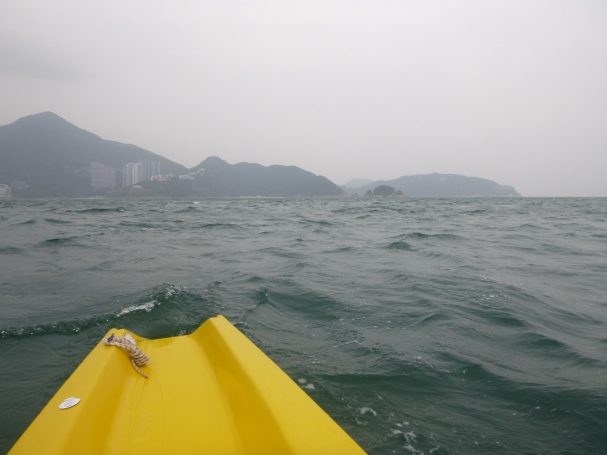

You are a flatwater rower intrigued by coastal rowing. What is this mountain biking of rowing or the “wildwater” rowing?
The first time you feel your coastal boat surfing a wave, that will put a longlasting smile on your face
..says Lars Wichert, a multiple coastal – silver medal winner.
What is different in coastal rowing?
More and more rowers ave that smile on their lips. But have they noticed the small changes that coastal rowing requires? Swedish Olympic rower Lassi Karonen who rowed at the 2013 World Rowing Coastal Championships said:
“The similarity (with flat-water rowing) is the movement of the stroke, everything else is different.”
If you are rowing coastal boats on a freshwater lake with no wind and waves, there is little difference, just that the boats are heavier. On the sea you have tides and currents to deal with, along with waves. Waves can also be significant on lakes and rivers, especially when wind is pushing against a strong current or stream. These are the conditions when coastal boats not only come into their own, but the rowing technique shifts.
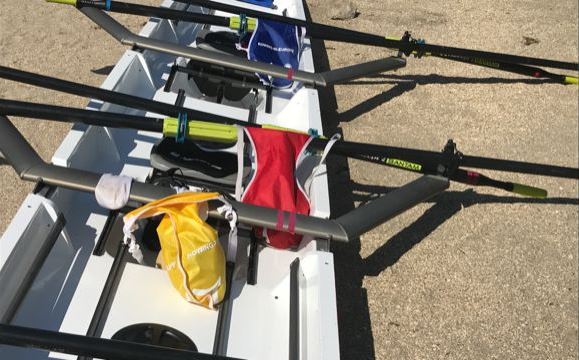

Coastal Rowing Technique – for recreational rowing
In the last few years there are many authoritative sources on coastal rowing technique. Below are some pointers based on conversations with coastal rowers, internet research and my own experience.
- Being relaxed is very important. You need to feel the water and adjust each stroke to the conditions.
- Constantly adapt to wind, waves and current.
- Blades: Ask for coastal oars if possible. E.g. Swift Racing has developed new Coastal oars (65% carbon shaft) to have the strength and durability needed to cope with coastal rowing’s mix of extreme conditions – turbulent winds, rough water, contact with debris, collisions with other boats and buoys, to name a few. The oars have the toughness rowers need to ensure they have the edge, in all conditions.
- Keep the blades in the water, let the boat follow the wave and don’t fight the sea.
- Different hand heights are possible and often needed to keep the blades in the water.
- Navigation is key: check the horizon and find out about a potential current. For example, if the course is generally to the north, but the current is to the west, then the rower must choose a point upstream, or so the bow is to the east of the destination. Look off the stern to find a point and hold it. Then the current will push the boat toward the desired destination.
- Have a soft catch and apply power mid-stroke, once you have the feel of the water and connection to it.
- Shorten the slide as needed, and row more upright. Seek stability, not reach. Get speed from the leg drive, not stroke length.
- Ensure a clean release and don’t wash out at the end of the drive – get the blades out square and quickly so they do not get caught in the waves.
- When it gets rough, get about 20cm of horizontal hand separation. Practice leading with different hands.
- A faster slide helps in rough conditions by minimizing the time that you are least stable and the risk of blades flopping about in wind and waves.
- Rate 22 rather than 18, keep up the momentum.
- Keep rowing. Steering the boat, especially a quad, needs propulsion. If rowers stop rowing because waves crash in, then the boat will really get into trouble.
In addition to these basics of the stroke, there is a lot to learn about rowing in waves, reading and adjusting for current, beach launches and landings and figuring out how to actually surf!
Have a look at the FISA booklet:
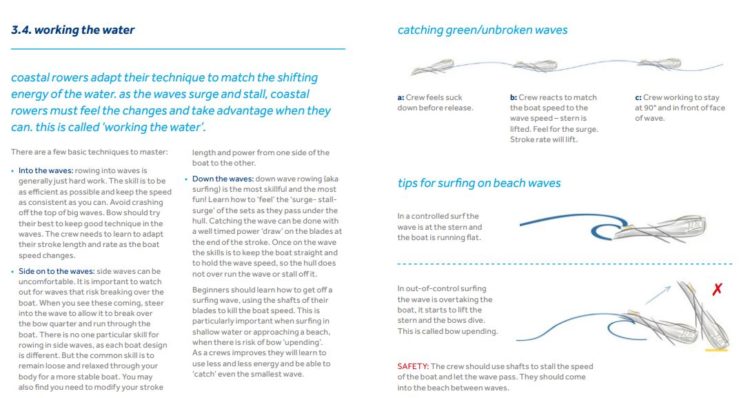

- Hanlan Boat Club lake Ontario, Canada video about coastal rowing
- UK Rowing and Regatta magazine article on Coastal Rowing “A Pinch of Salt” from April 2011
- Notes on Coastal Rowing, What Where And How by Sagar Sen on Scribd
- The Rebel Rower blog by Ben Booth – focused on coastal (his Drive tips)
Carrying the boats: Coastal boats are double to triple the weight of fine racing boats. So use a dinghy or small boat trolley for boat transportation.
One final thing, many flatwater rowers row with PDFs (personal floatation devices). FISA racing rules require life jackets to be in the boat – which is defined as having enough floatation that will allow a person to float unaided face upwards. Be safe when exploring coastal waters.
One final thing, many flatwater rowers row with PDFs (personal floatation devices). FISA racing rules require life jackets to be in the boat – which is defined as having enough floatation that will allow a person to float unaided face upwards. Be safe when exploring coastal waters.
Give coastal rowing a try. Enjoy! It is the same, yet different and a lot of fun.
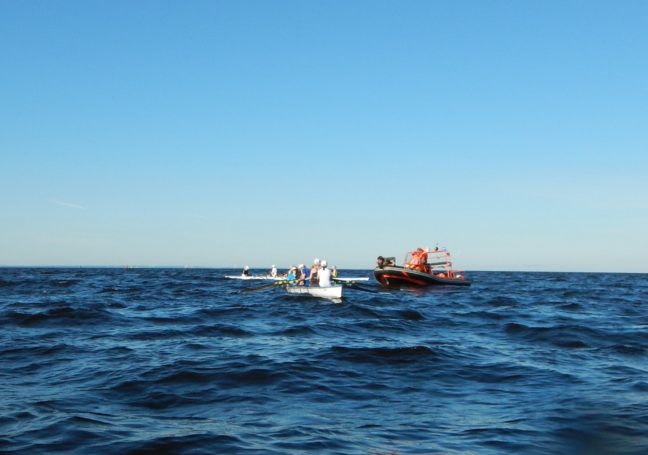

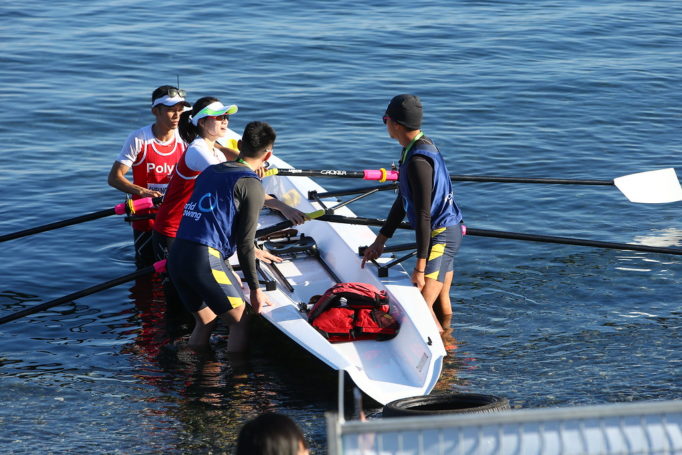




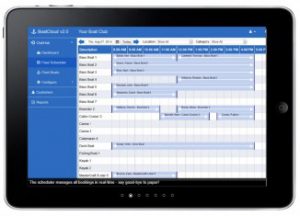
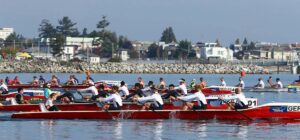

This Post Has 4 Comments
Fixed seat coastal rowing yet again has differences to drive a heavy boat. Celtic Longboat technique is also different to Cornish gigs which are also fixed seat.
David – now you’ve piqued my curiosity. Would you be able to write a short explanation about these techniques and the differences?
Hi Rebecca,
There is lots of coastal fixed seat coastal rowing in Spain, specially in the north where it is something semiprofessional. You can visit http://www.euskolabelliga.com/. There is another important league in the Mediterranean, if you are interested in you can visit this website: http://www.ligasuma.com/
Best regards,
Thanks for sharing that Eduardo. Appreciate it.